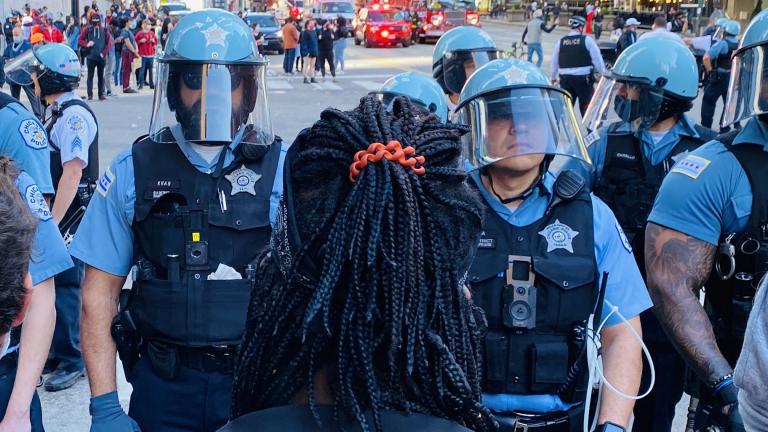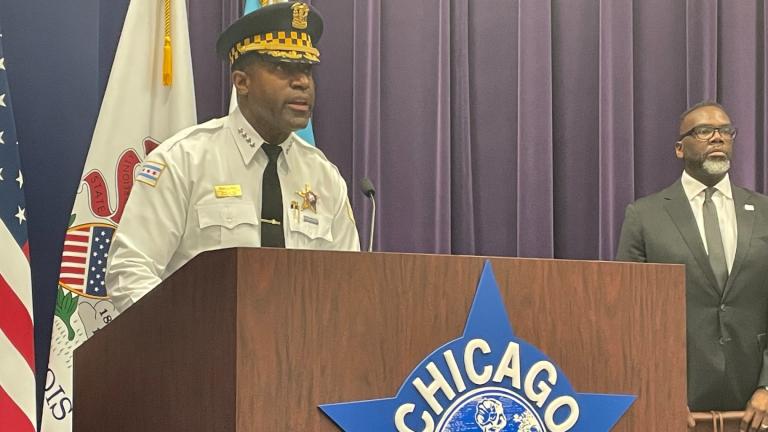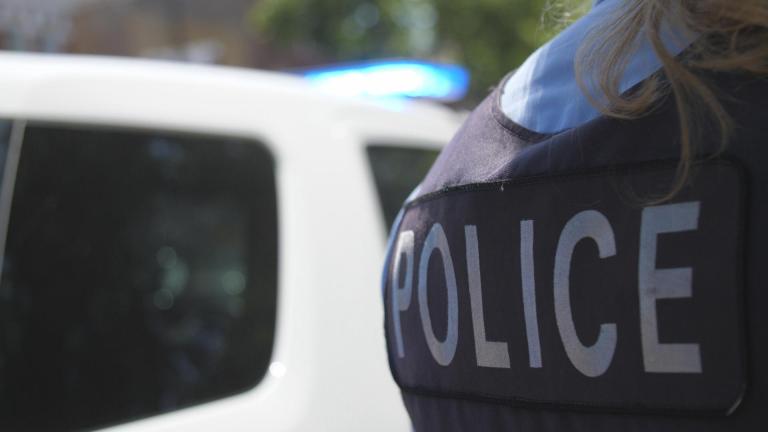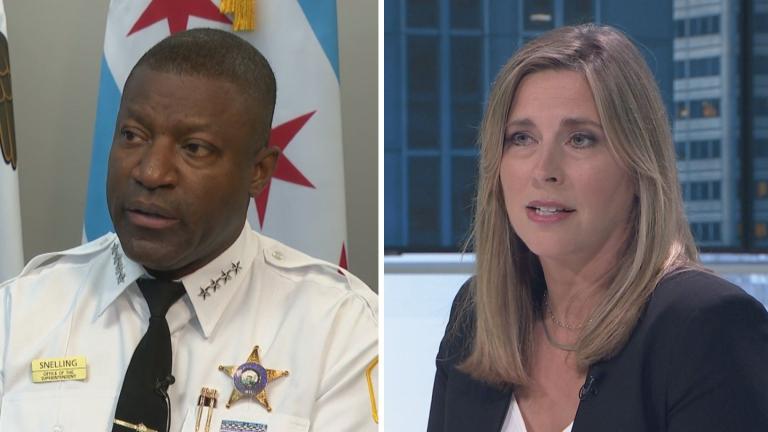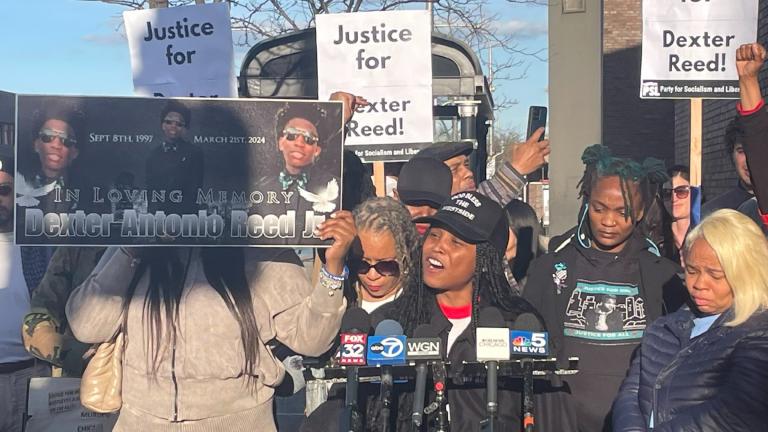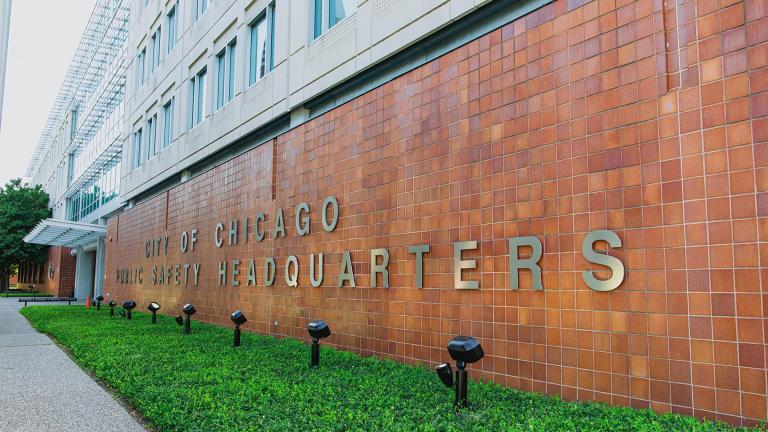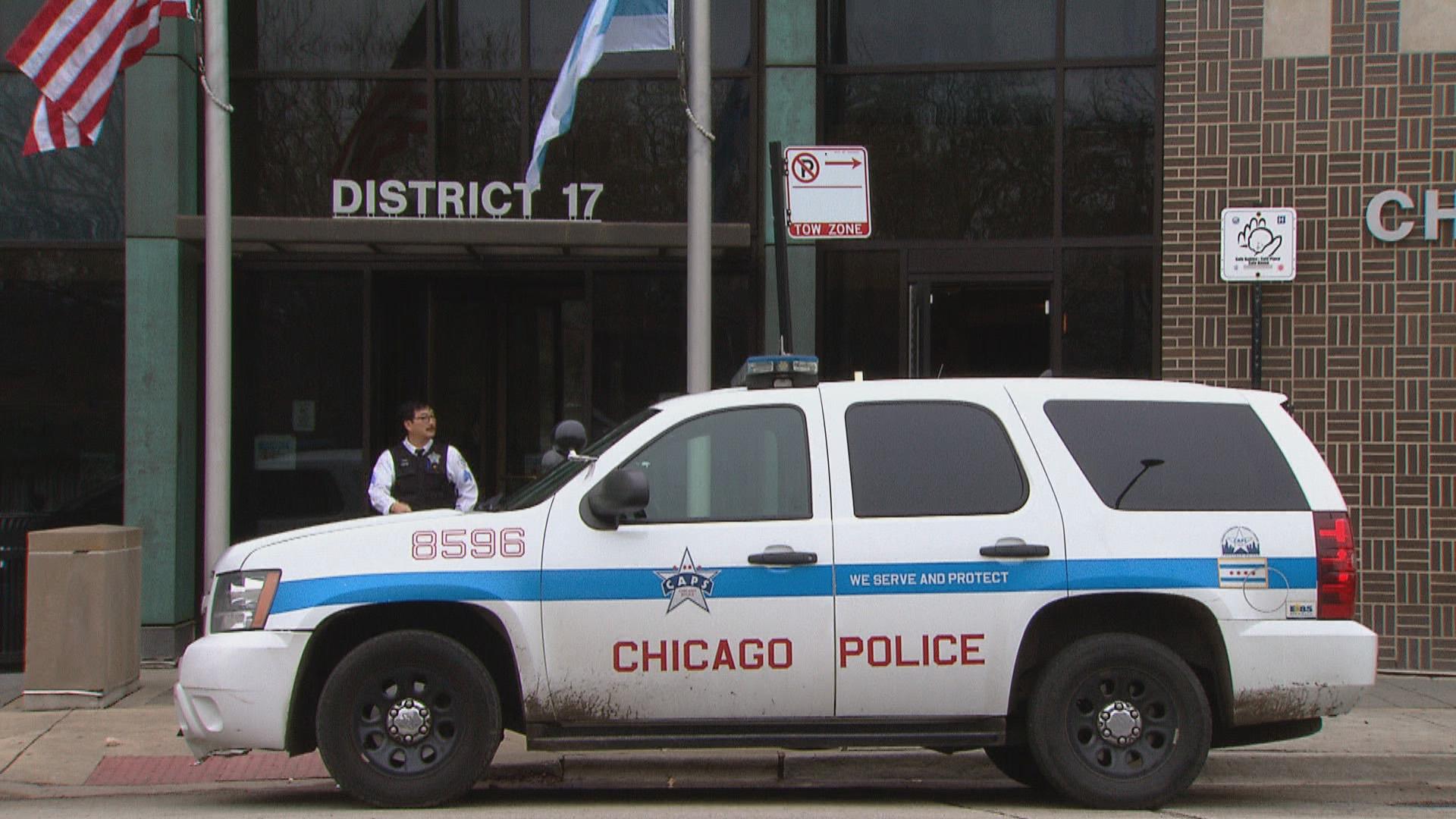 (WTTW News)
(WTTW News)
Chicago Police were more likely to stop Black Chicagoans than White Chicagoans and more likely to use force against them, according to an audit released Tuesday.
Black Chicagoans were “overwhelmingly disproportionately” stopped by Chicago Police officers across the city, including in parts of the city that Chicago Police consider to be “high crime” areas, according to the report issued by interim Inspector General William Marbeck.
“The earliest phase of many police-civilian interactions that lead to uses of force — an officer’s stop of someone in an investigatory or traffic stop — manifests stark race-based disparities,” the audit concludes.
In addition, officers used more force against Black Chicagoans than they did against White Chicagoans, according to the report.
When a police stop results in an officer using force against a Chicagoan, 83.4% of those incidents involve a Black person, according to the report.
The people of Chicago are 31.4% White, 29.9% Latino, 28.7% Black and 6.9% Asian, according to the 2020 U.S. census.
Using publicly available data, the study analyzed use of force reports filed by Chicago Police officers between Oct. 17, 2017, and Feb. 28, 2020, just as the first wave of the COVID-19 pandemic swept Chicago and upended all aspects of life in the city, including policing, according to the audit. Because Asian and Native American Chicagoans were stopped so infrequently, the audit made no conclusion about disparities involving those races.
The audit makes no conclusion as to whether Chicago Police officers were more likely to stop Black Chicagoans and use force against them because of racial or ethnic bias. In addition, the audit does not determine whether officers followed departmental policy by making the stops studied or deciding to use force.
Chicago officers were also more likely to use more force against Latino people than White Chicagoans, according to the report. At the same time, White Chicagoans “were almost never more likely to face” more force from police officers than Black or Latino Chicagoans.
The audit of the Office of the Inspector General covers conduct by the Chicago Police Department during a three-year period following an investigation by the Department of Justice that found CPD officers routinely violated the constitutional rights of Black and Latino Chicagoans. That probe ended in January 2017.
In January 2019, city officials agreed to make a series of changes to how the department operates to ensure that the civil rights of all Chicagoans are protected as part of a consent decree overseen by U.S. District Court Judge Robert Dow. Independent monitor Maggie Hickey found the police department missed 70% of the deadlines for reforms between September 2019 and February 2020.
Mayor Lori Lightfoot’s office had no immediate response to the audit when contacted by WTTW News.
In a response included with the inspector general’s audit, Chicago Police Supt. David Brown said the department had “made great strides in use of force and procedural justice training and has revised numerous policies including, but not limited to, the entire use of force suite of orders” since the time period studied by the inspector general.
The department created a force review unit in 2018 that reviews “individual reports of force and makes recommendations for training opportunities” and flags incidents for additional review, Brown told the inspector general.
However, Brown took issue with the inspector general’s review for making a “qualitative analysis of data and does not reflect the factual complexities and situational uniqueness of each use of force incident.”
The audit, completed by the inspector general’s public safety division, made no recommendations to the department in part because of the method of its analysis, according to the report.
“The quantitative analysis that forms the basis of the findings can provide important insights about where in the universe of police-civilian interactions CPD might focus its efforts to reduce disparate outcomes in its application of force; however, this data, taken on its own, cannot answer the question of why the disparities exist where they do,” according to the report. “Establishing a rigorous understanding of cause would require different types of testing, for which this report can serve as a foundation. The report conclusion identifies directions for further inquiry into core areas of police strategy and practice that merit further consideration as CPD, [the Office of the Inspector General], and the broader public seek a better understanding of the troubling patterns of racial disparities documented here.”
Black Chicagoans More Likely to be Stopped, Searched
Black Chicagoans were disproportionately stopped by Chicago Police officers across the city, according to the report.
In the Near North Police District, which includes the Loop and the Michigan Avenue shopping district, just 7.9% of residents are Black. But 73.5% of all investigatory stops conducted by police officers targeted Black Chicagoans, according to the report.
That pattern held in the city’s Gresham Police District, which includes several South Side neighborhoods, including Auburn Gresham. The population in those neighborhoods is 95.9% Black, and 97.2% of investigatory stops were of Black people, according to the report.
In addition, Black Chicagoans were 1.5 times more likely to be searched or patted down during an investigatory stop than Chicagoans of other races, according to the report.
Cars belonging to Black people were 3.3 times more likely to be searched than cars belonging to white people, according to the report.
“There is no clear trend in one direction or the other as to whether Hispanic people across [police districts] were over- or underrepresented in stops,” according to the report.
Officers More Likely to use Force Against Black Chicagoans
Black people were not only more likely to be stopped by police and searched by police, officers were more likely to use force against them, according to the report.
Officers were also more likely to use less-than-lethal weapons, like Tasers, against Black Chicagoans than white Chicagoans, according to the report.
Officers used lethal force in 60 incidents analyzed by the inspector general’s audit. None of those incidents targeted white Chicagoans, according to the report.
Uncertainty for Chicago’s Watchdog
Chicago has been without a City Council-confirmed watchdog for four-and-a-half months, as the search for former Inspector General Joseph Ferguson’s replacement continues behind closed doors without any signs of progress.
Mayor Lori Lightfoot declined to reappoint Ferguson to serve a fourth term in office after the two repeatedly clashed over a number of issues, including efforts to reform the Chicago Police Department and the way the mayor and police leaders handled the protests and unrest triggered by the police murder of George Floyd in May 2020.
The analysis in the audit released Tuesday was completed by former Deputy Public Safety Inspector General Deborah Witzburg who resigned Nov. 1, telling Lightfoot she wanted the top job.
The role of the deputy inspector general for public safety was created as part of a package of reforms crafted by the Chicago City Council and Emanuel in the wake of the police murder of 17-year-old Laquan McDonald. It was designed to ensure that officers guilty of misconduct were held accountable and that the Chicago Police Department did not violate the civil rights of Chicagoans.
Contact Heather Cherone: @HeatherCherone | (773) 569-1863 | [email protected]

